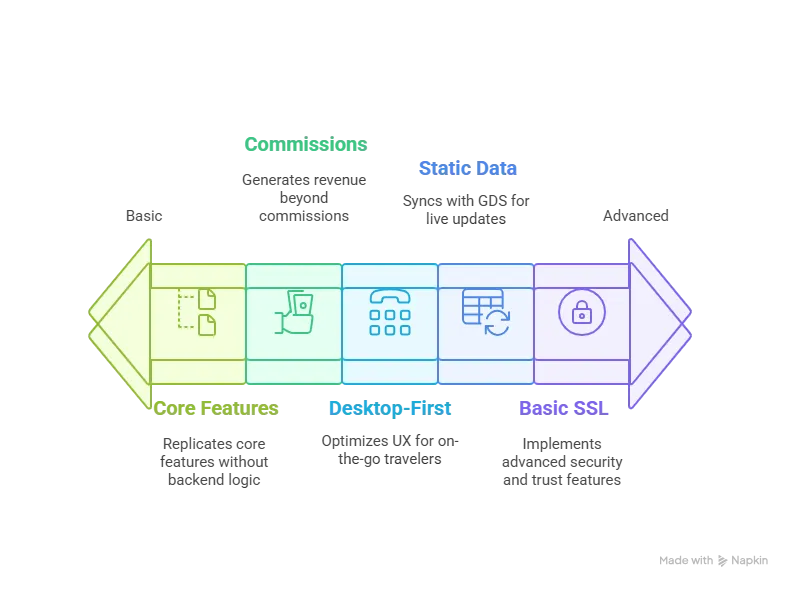A couple of years ago, a scrappy startup founder I met at a networking event said something that stuck with me: “We tried cloning Yatra... thought it’d be plug-and-play. It wasn’t.” Fast forward six months, and that same team had burned half their runway on a barely functional booking app.
If you’re a travel enthusiast-turned-entrepreneur or a savvy digital startup eyeing the $1.3 trillion global tourism market, a Yatra clone might sound like the jackpot. The brand recognition is high, the business model seems obvious, and clone scripts are everywhere. But let’s be honest — launching a successful Yatra-like app isn’t just about copying features. It’s about avoiding the landmines that trip up most startup journeys .At Miracuves, we’ve helped dozens of founders avoid these traps. Here’s what we’ve seen — and how you can build smarter from Day One
Mistake #1: Treating It Like a Copy-Paste Project
One of the biggest blunders? Assuming a clone app is a Ctrl+C/Ctrl+V job. Spoiler: it’s not.Sure, Yatra’s core features — flight booking, hotel aggregation, itinerary planning — can be replicated. But what makes it tick is the seamless backend logic, real-time inventory APIs, and the trust signals (reviews, ratings, payment reliability) built over years. Slapping together a frontend with React Native won’t get you very far without a robust backend architecture to handle bookings, cancellations, and real-time price fluctuations.

Read more : Pre-launch vs Post-launch Marketing for Yatra Clone Startups
Mistake #2: Ignoring the Monetization Strategy
Let’s talk cash. Most founders focus on launching features — but forget to plan how those features will generate revenue.
Yatra doesn’t just make money from commissions. They leverage dynamic pricing, ancillary services (travel insurance, airport pickups), promotional tie-ups, and even white-labeling. Your clone app needs to go beyond “earn from bookings” and include diversified income streams from the get-go.
A well-placed upsell for travel insurance or a last-minute hotel discount can make a 20–30% difference in margins. Ignore this, and you’re leaving money on the tarmac.
global online travel revenue projected to hit over $1 trillion, according to Statista, it’s worth mapping your monetization strategy from day one.
Read more : Business Model of Yatra: India’s Top Online Travel Platform
Mistake #3: Overlooking Mobile UX for Travelers
Your users aren’t sitting at desks—they’re booking on-the-go from smartphones, during lunch breaks, at airports, or in taxis. Yet many clones are optimized for desktop-first, with cluttered interfaces and laggy mobile gestures.
Yatra’s mobile app works like magic — intuitive, responsive, and optimized for even low-bandwidth areas. If your clone doesn’t offer location-aware suggestions, tap-friendly navigation, or single-click payment flows, you’re risking bounce rates north of 70%.
Mistake #4: Weak Integration with Real-Time Inventory
This one’s sneaky — and deadly.
Yatra works because it syncs with GDS (Global Distribution Systems) like Amadeus or Sabre for real-time flight and hotel availability. Most clone apps use static data or delayed APIs, resulting in errors like “booking not available” or mismatched prices — a nightmare for your support team and your app store rating.
If your backend doesn’t handle live updates, availability caching, and rollback for failed payments, you’re not ready to scale. Period.
Mistake #5: Skipping Security & Trust Features
In travel apps, trust is everything.
Users input passport details, card info, even COVID certificates. Yet many Yatra clones forget basic SSL encryption, two-factor authentication, and compliance with local travel data laws (like GDPR or India’s Data Protection Act).Worse, clones often miss adding trust cues like verified badges, support chat, or refund policies. And when users don’t feel safe? They bounce. Fast.
Read more : Understanding Yatra’s Revenue Model That Fuels Its Travel Empire
Conclusion:
Building a Yatra clone isn’t a shortcut — it’s a strategic move. But only if you avoid these rookie mistakes that sink most travel startups. From backend plumbing to frontend polish, every detail matters.
The travel booking tech wave is far from over — with AI, voice search, and dynamic packaging redefining experiences, the next Yatra could come from your garage.
At Miracuves, we help innovators launch high-performance app clones that are fast, scalable, and monetization-ready. Ready to turn your idea into reality? Contact Us
FAQs
What exactly is a Yatra clone app?
It’s basically your own version of a travel booking platform — inspired by Yatra. Think flights, hotel bookings, trip planning, and maybe even holiday packages — all packed into one slick app. You get the same functionality, but under your brand and with your unique twist.
Is it legal to build a Yatra clone?
Yup, totally legal — as long as you’re not ripping off their logo, branding, or copyrighted content. You’re recreating the idea and features, not doing a carbon copy.
What tech stack works best for this kind of app?
Most travel booking apps today are built using React Native for mobile, and either Node.js or Laravel for the backend. For storing your data? PostgreSQL or MongoDB works great. And don’t forget those real-time APIs for pulling in flight and hotel availability — that’s where the magic happens.
Can I make money without selling flights?
Absolutely. You can earn through hotel partnerships, affiliate deals, upselling travel insurance, listing local tours, or even selling travel accessories. There are tons of ways to monetize — flights are just one piece of the pie.
How long does it take to launch a Yatra clone?
If you use a pre-built framework and team up with the right developers, you could be live in 4 to 6 weeks. Going full custom? That’ll take more like 3 to 4 months, depending on how many bells and whistles you want.
Related Articles :
- Expedia vs Trulia Business Model | Which Platform Wins for Startups?
- Expedia App Marketing Strategy: How the Travel Giant Books Big with Every Click
- Revenue Model of Expedia: How the Travel Tech Titan Earns Globally
- Pre-launch vs Post-launch Marketing for Makemytrip Clone Startups
- Reasons startup choose our makemytrip clone over custom development







